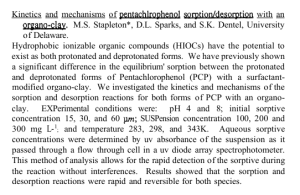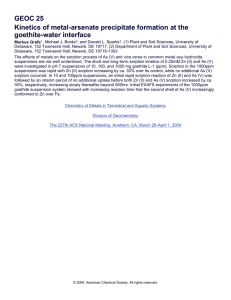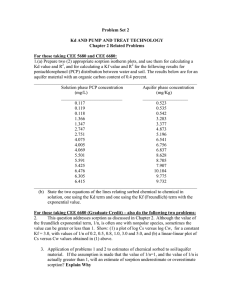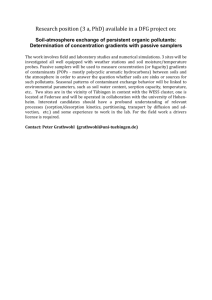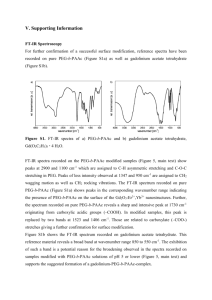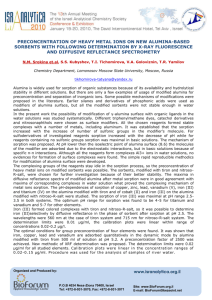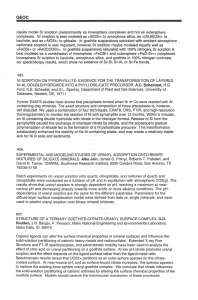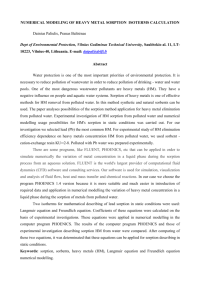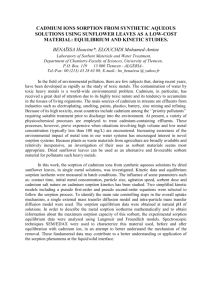Review Article 1
advertisement
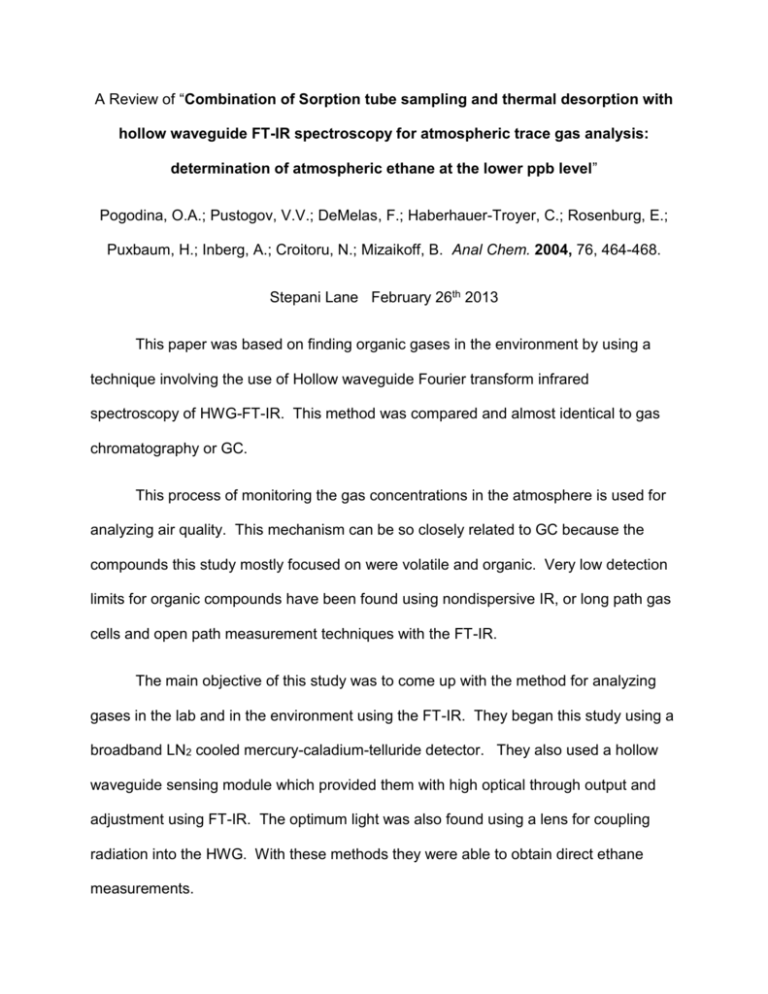
A Review of “Combination of Sorption tube sampling and thermal desorption with hollow waveguide FT-IR spectroscopy for atmospheric trace gas analysis: determination of atmospheric ethane at the lower ppb level” Pogodina, O.A.; Pustogov, V.V.; DeMelas, F.; Haberhauer-Troyer, C.; Rosenburg, E.; Puxbaum, H.; Inberg, A.; Croitoru, N.; Mizaikoff, B. Anal Chem. 2004, 76, 464-468. Stepani Lane February 26th 2013 This paper was based on finding organic gases in the environment by using a technique involving the use of Hollow waveguide Fourier transform infrared spectroscopy of HWG-FT-IR. This method was compared and almost identical to gas chromatography or GC. This process of monitoring the gas concentrations in the atmosphere is used for analyzing air quality. This mechanism can be so closely related to GC because the compounds this study mostly focused on were volatile and organic. Very low detection limits for organic compounds have been found using nondispersive IR, or long path gas cells and open path measurement techniques with the FT-IR. The main objective of this study was to come up with the method for analyzing gases in the lab and in the environment using the FT-IR. They began this study using a broadband LN2 cooled mercury-caladium-telluride detector. They also used a hollow waveguide sensing module which provided them with high optical through output and adjustment using FT-IR. The optimum light was also found using a lens for coupling radiation into the HWG. With these methods they were able to obtain direct ethane measurements. A sample preconcentration step was added due to the atmospheric gas concentrations being much lower than the detection limits. The sampling was done on two separate sorption tubes and the total time for analysis was less then fifteen minutes. It took about thirty seconds for each sample. They came up with about 200 data point around the wavelength they were looking for and were therefore able to eliminate most of the noise. To calibrate the combined instruments (HWG-FT-IR) was done by sampling the calibration gas on a sorption tube and then desorption into the instrument its self. Due to the calibration or the instruments combined together is where the researchers realized that this instrument produced similar results as the GC. This analyzer was optimized for field measurements of ethane at lower ppb concentration levels. They enhanced this combination by using the preconcentration procedure on selective sorption tubes, which was mentioned earlier. The only thing that I would suggest for this study would be that they don’t mention testing gas in different locations and what that did to their calibration. Having taking statistics, there must be some differentiation in their air samples as they are taking them. Also, if I understand correctly, replicating almost exactly what the GC can do doesn’t seem to be an effective study. We would want something that is better than something we already have.
